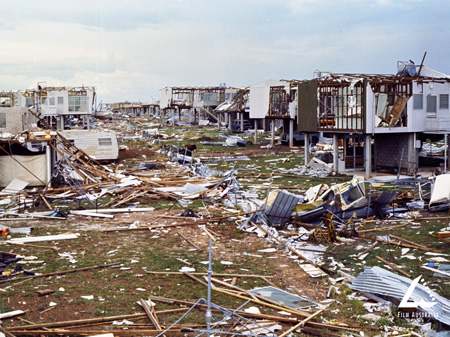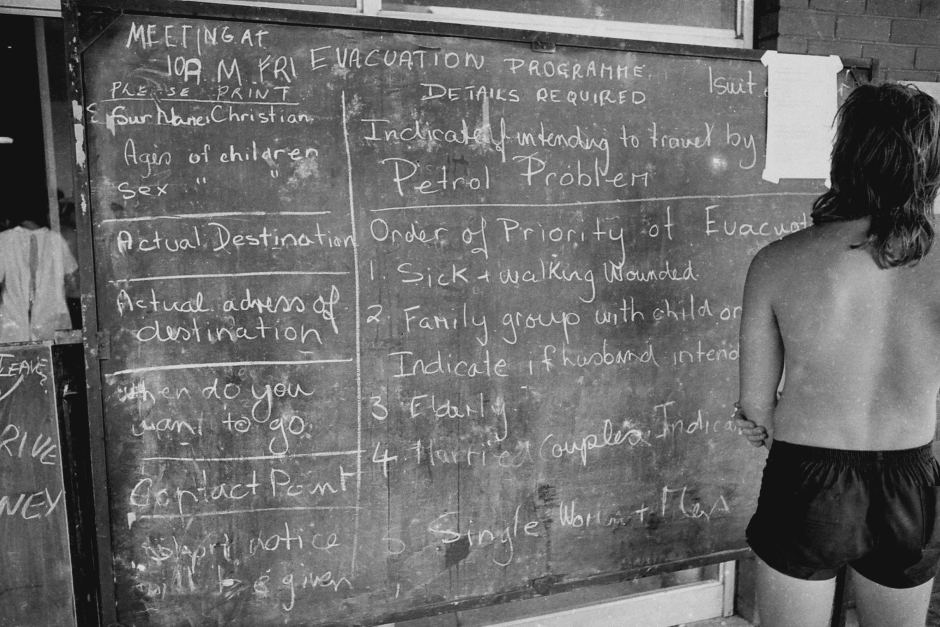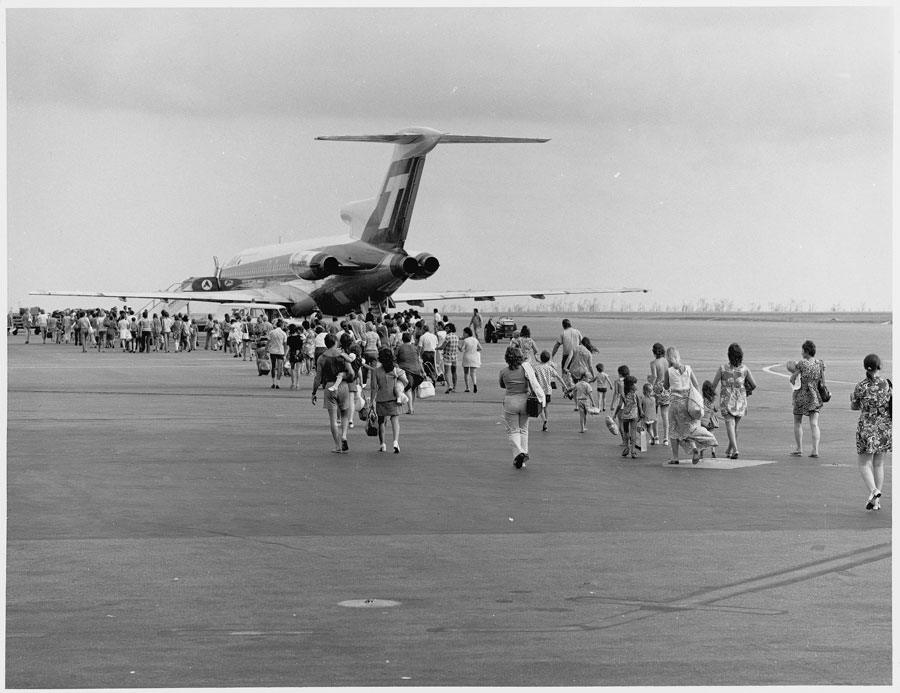
In 1974, Santa never made it into Darwin. On Christmas Day, residents emerged to find a city devastated by Cyclone Tracy. Government officials declared that Darwin had 'ceased to exist as a City'.
Forty years on this Northern capital has established itself as the gateway to Asia; a vibrant, relaxed, multicultural City, but in the days and weeks that followed the disaster few believed that the city could recover.

As the eye of the cyclone passed over the city between midnight and 7am on Christmas morning, torrential rain fell and the winds were officially recorded at 217 kilometres per hour (prior to the Bureau of Meteorology anemometer being destroyed). Houses and other buildings disintegrated under the onslaught, accompanied by the sounds of flying debris and breaking glass.
The Bureau of Meteorology's official estimates suggested that Tracy's gusts had reached 240 km/h (150 mph). The lowest air pressure reading during Tracy was 950 hectopascals (28 inHg), which was taken at around 4 a.m, by a Bureau staff member at Darwin Airport. This was recorded during the eye of the cyclone. From around 6:30 a.m, the winds began to ease, with the rainfall ceasing at around 8:30 a.m.

Records have identified 66 names of individuals who perished as a result of the cyclone (53 on land and 13 at sea), and many more were injured. Over seventy per cent of Darwin’s homes were destroyed or suffered severe damage, and all public services – communications, power, water and sewerage – were severed.
Fortunately, almost one third of residents were 'down South', spending Christmas with friends and family.
News of the disaster was delayed. Most Australians were not aware of the cyclone until late in the afternoon.

The rescue operation to the country's remote northern capital was the largest of its time.
The Australian government began a mass evacuation by road and air. All of the Defence Force personnel throughout Australia, along with the entire Royal Australian Air Force's fleet of transport planes, were recalled from holiday leave and deployed to evacuate civilians from Darwin, as well as to bring essential relief supplies to the area. Thirteen ships of the Royal Australian Navy were used to transport supplies to the area as part of Operation Navy Help Darwin; the largest humanitarian or disaster relief operation ever performed by the Navy.

Commercial airlines, including ANSETT, TAA and QANTAS, assisted in the evacuation of civilians immediately after the disaster.
QANTAS was credited with a then world record for carrying the most passengers on a 747 when it evacuated 673 people on a flight from Darwin. The airline flew out a total of 4,925 people.
In the week that followed Darwin’s population was reduced to little more than 10,000. This was a deliberate strategy to safeguard residents and to aid in a speedy clean up operation. Rebuilding commenced almost immediately.
The Darwin Reconstruction Committee was formed and tasked with rebuilding the City within five years. In fact, it took them only three. However, it was only in 1978 that the city could house pre-Tracy numbers.
Visitors to the Territory can learn more about Tracy at the Museum and Art Gallery of the Northern Territory (MAGNT) at Bullocky Point in Darwin. They are open 7 days a week. Don't miss the 'Cyclone Tracy room' where eerie audio footage can be experienced in a small, darkened room!